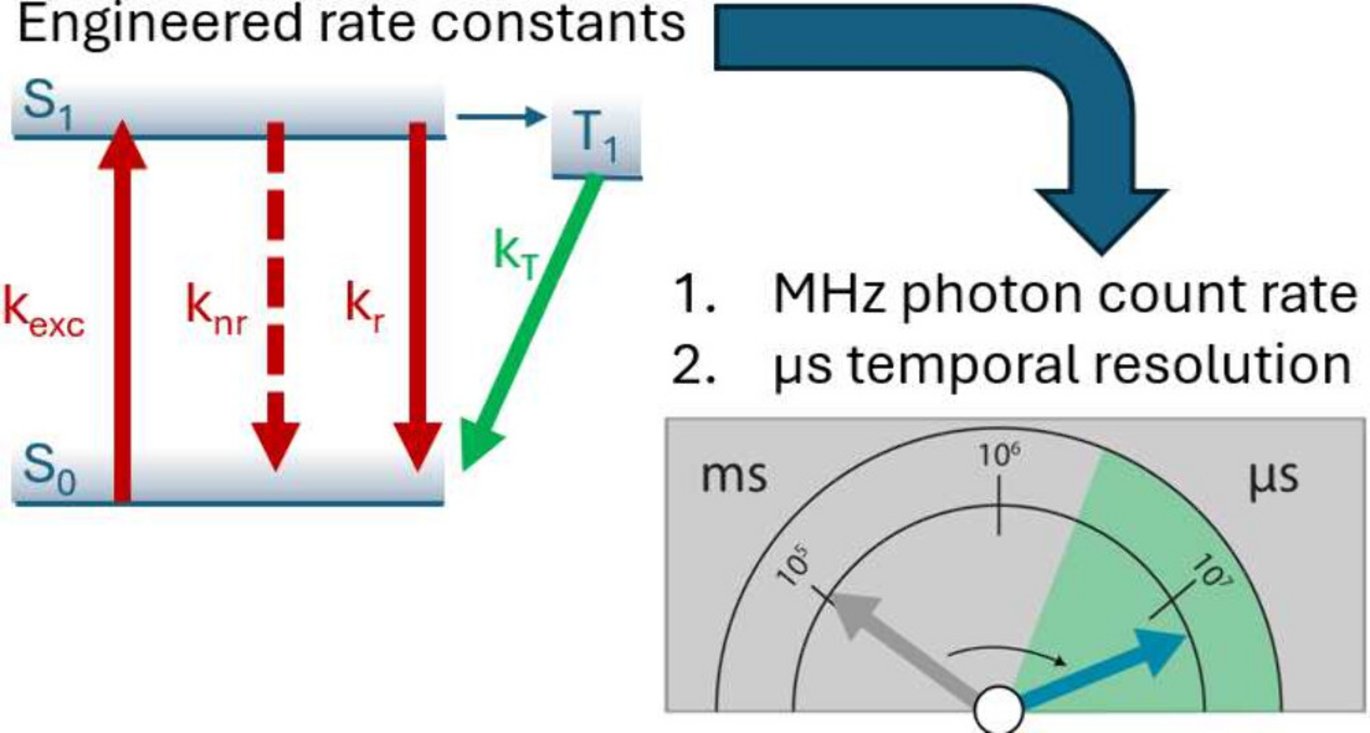New Technique Unveils Microsecond Biomolecular Dynamics Using Plasmon-Enhanced Fluorescence
Researchers from interdisciplinary Nanoscience Center (iNANO) and Eindhoven University of Technology (TU/e) have shown how to access sub-millisecond dynamics from single-molecule fluorescence experiments by using plasmon enhanced fluorescence.

Single-molecule fluorescence microscopy is an important and much used technique to study the dynamics and functionality of biomolecules for example the conformational changes and interaction dynamics of enzymes, nucleic acids or cellular receptors. Understanding these biomolecular dynamics is key to progress in molecular biology and medicine. While these processes span a broad range of time scales single-molecule fluorescence does not give access to sub-millisecond time scales thus limits what can be gained from such experiments. Other techniques such as fluorescence correlation spectroscopy can access nanosecond dynamics but on ensemble-level and therefore cannot capture the dynamics of individual molecule.
In this work the researchers show that by coupling a fluorescent dye molecule to a plasmon from gold nanorods, they can enhance the fluorescence signal to push the signal to microsecond time resolution. In other words, 1000 times faster than without our plasmon enhanced approach.
They have done this by balancing the excitation and decay rates of the plasmon coupled dye by the volume of the gold nanorods thus increasing the maximum intensity and by chemical modifications to suppress the dark states of the dye molecule to prevent blinking.
The team demonstrate applications in two examples. First, they reveal transient encounters and hybridization of DNA with 1 microsecond time resolution. Second, they reveal microsecond intramolecular dynamics of multivalent complexes.
Their results pave the way toward real-time microsecond studies of biochemical processes using an implementation compatible with existing single-molecule fluorescence methods.
About the research
Study type:
Nanotechnology, Experimental physics
External funding:
This project has received funding from the European Union’s Horizon 2020 research and innovation programme under the Marie Skłodowska-Curie grant agreement No. 860914, from the Danish National Research Foundation center grant CellPAT (DNRF135), and from the European Research Council (ERC) under the European Union’s Horizon 2020 research and innovation programme (grant agreement No. 864772)
Conflicts of interest:
The authors declare no competing financial interest.
Link to the scientific article:
Rate-Engineered Plasmon-Enhanced Fluorescence for Real-Time Microsecond Dynamics of Single Biomolecules
Sjoerd W. Nooteboom, Kasper R. Okholm, Vincenzo Lamberti, Bas Oomen, Duncan S. Sutherland, and Peter Zijlstra
Contact information:
Professor Duncan S. Sutherland
Aarhus University
Interdisciplinary Nanoscience Center (iNANO)
Email: duncan@inano.au.dk
Associate Professor Peter Zijlstra
Eindhoven University of Technology
Applied Physics and Science Education
Email: p.zijlstra@tue.nl